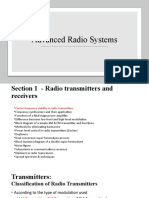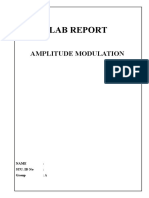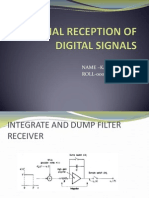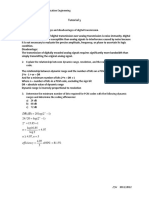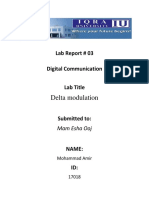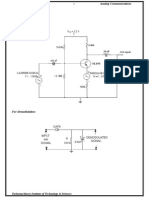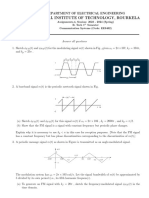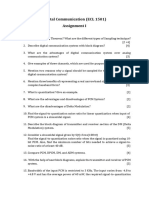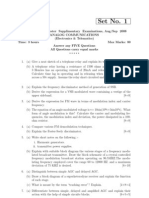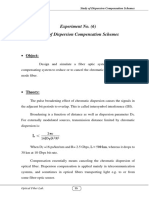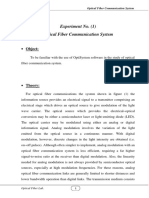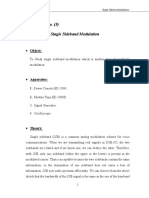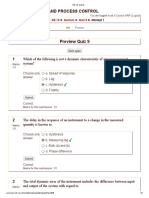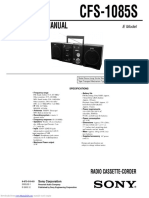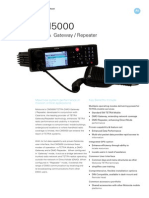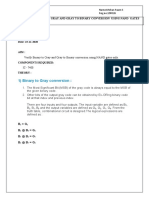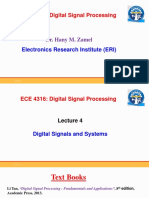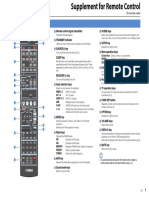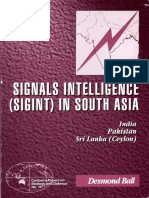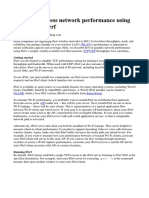0% found this document useful (0 votes)
261 views5 pagesExperiment No. (5) : Frequency Modulation & Demodulation: - Object
This document describes an experiment on frequency modulation and demodulation using MATLAB Simulink. It discusses:
1) How to generate an FM signal by modulating a carrier signal's frequency using a message signal.
2) How to demodulate the FM signal using a lowpass filter and voltage controlled oscillator to extract the original message signal.
3) Key aspects of FM theory including the equations relating modulation index and frequency deviation to bandwidth as defined by Carson's Rule.
Uploaded by
Faez FawwazCopyright
© © All Rights Reserved
We take content rights seriously. If you suspect this is your content, claim it here.
Available Formats
Download as PDF, TXT or read online on Scribd
0% found this document useful (0 votes)
261 views5 pagesExperiment No. (5) : Frequency Modulation & Demodulation: - Object
This document describes an experiment on frequency modulation and demodulation using MATLAB Simulink. It discusses:
1) How to generate an FM signal by modulating a carrier signal's frequency using a message signal.
2) How to demodulate the FM signal using a lowpass filter and voltage controlled oscillator to extract the original message signal.
3) Key aspects of FM theory including the equations relating modulation index and frequency deviation to bandwidth as defined by Carson's Rule.
Uploaded by
Faez FawwazCopyright
© © All Rights Reserved
We take content rights seriously. If you suspect this is your content, claim it here.
Available Formats
Download as PDF, TXT or read online on Scribd
/ 5

